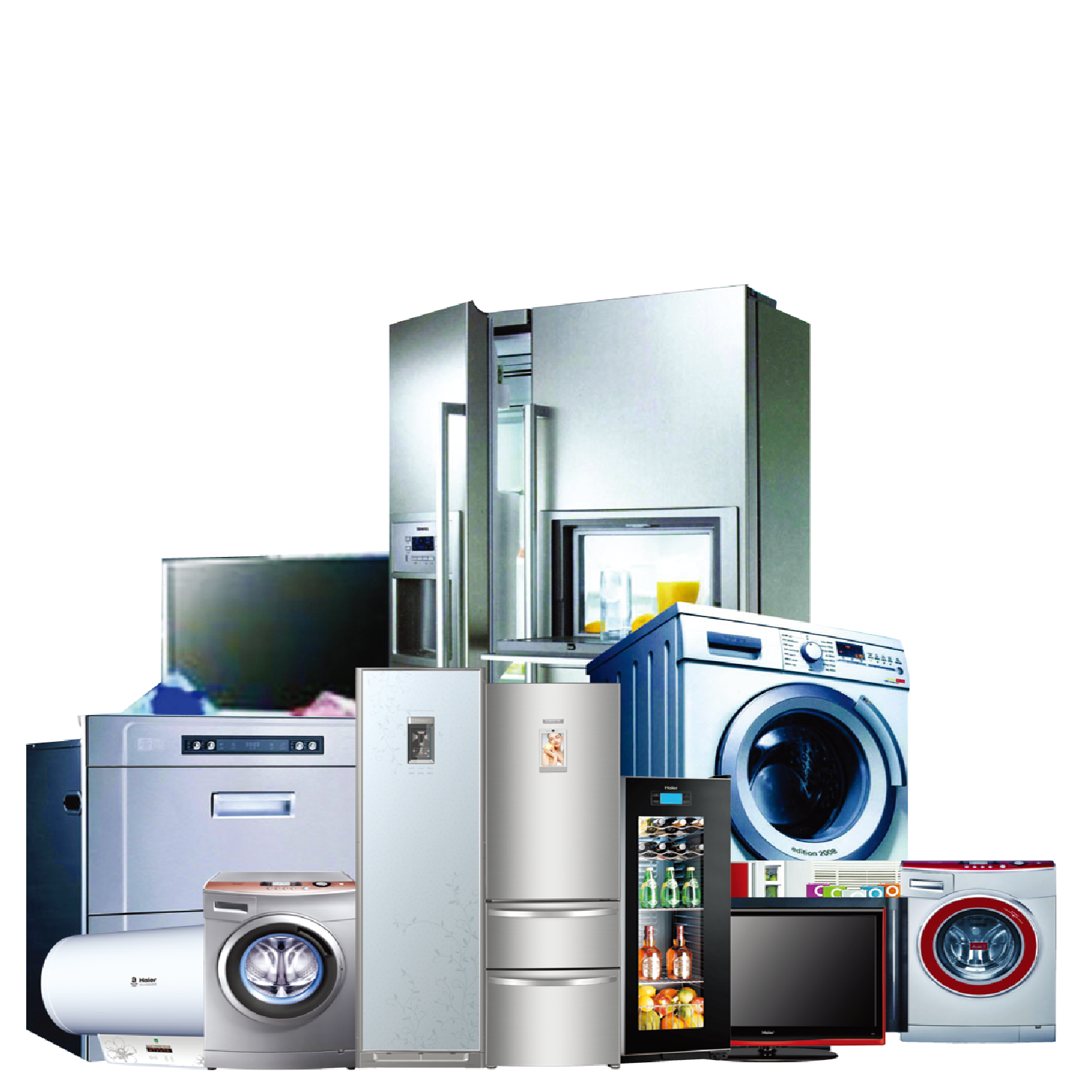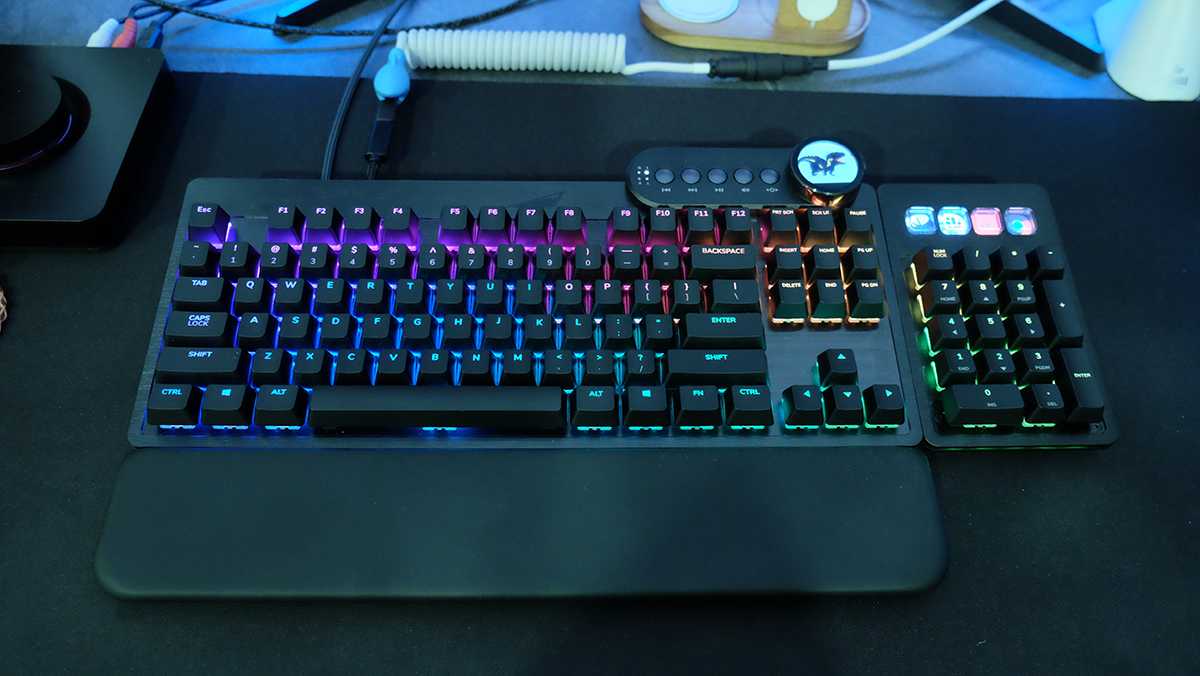Mountain Everest Max Keyboard Review Summary
MOUNTAIN has made a huge statement with Everest Max being the company’s first keyboard. It’s an amazing product that offers the benefits of a TKL and full-sized keyboard thanks to its removable number pad. Plus, it has other unique features like its media dock and programmable display keys.
Aside from its numerous features that you can’t find in other mechanical keyboards, it’s also a high-quality product. It has an aluminium top plate and Cherry MX keyswitches, so it’s definitely sure to last.
With its design and construction, we know that the company placed a lot of effort into the Everest Max. In fact, it’s one of the most well-made keyboards we’ve used. What makes it better is its versatility which allows for various customisations.
When it comes to performance, it’s great that MOUNTAIN didn’t miss out on this. The keyboard was responsive and smooth which are necessary especially for fast-paced games.
Although expensive, the Everest Max has a lot of unique features that are exclusively on this product. And with its excellent design, quality, and performance, it’s definitely worth the purchase.
To learn more about the Everest Max Keyboard, check out MOUNTAIN’s official product page for information.
Mountain Everest Max Keyboard Review – Design and Functionality
Everest Max is a tenkeyless modular keyboard that’s highly customisable. Although it’s a TKL type, it comes with a Numpad that can be attached to either side of the product.
It sports a milled aluminium top plate that’s in grey or black. What’s nice about it is that it’s sturdy and durable to the touch.
However, Everest Max lacks the usual flip-out feet for elevation and instead, sports a set of magnetic discs. These feature rubberised bottoms that help prop them up.
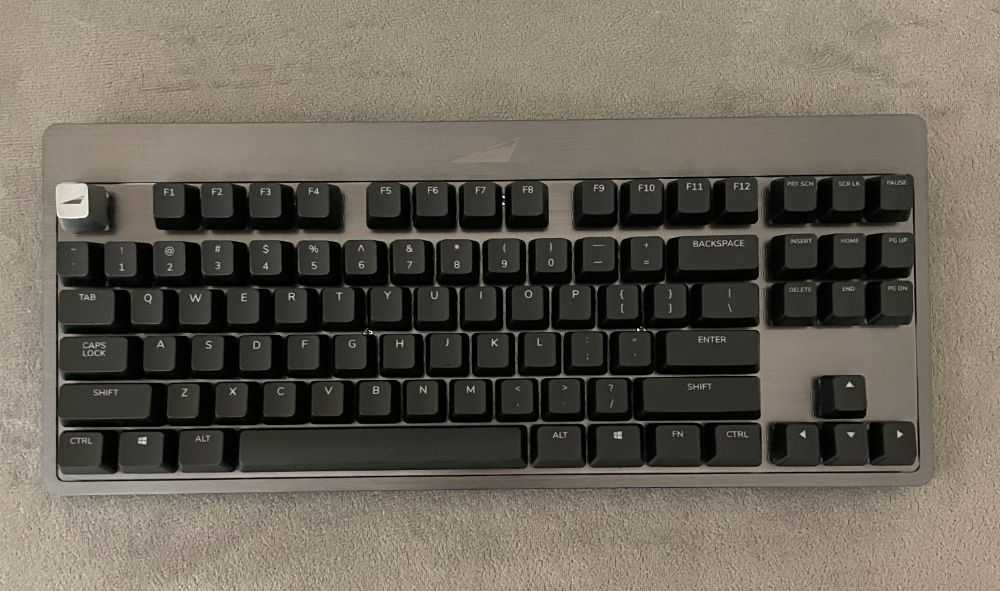
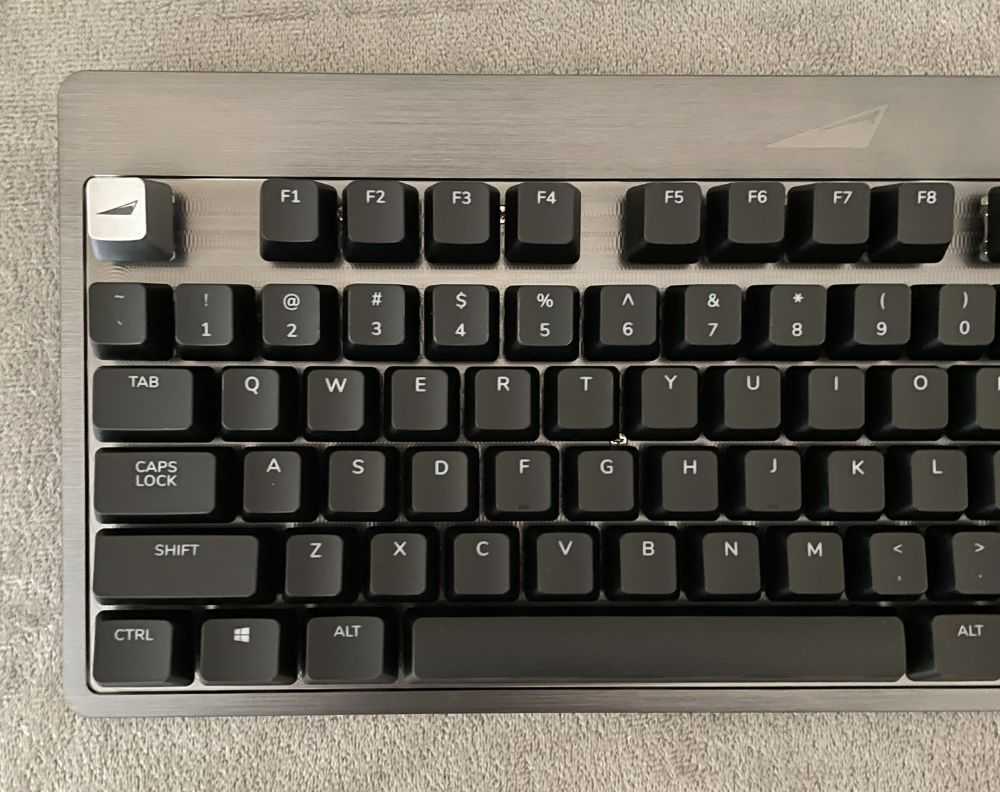
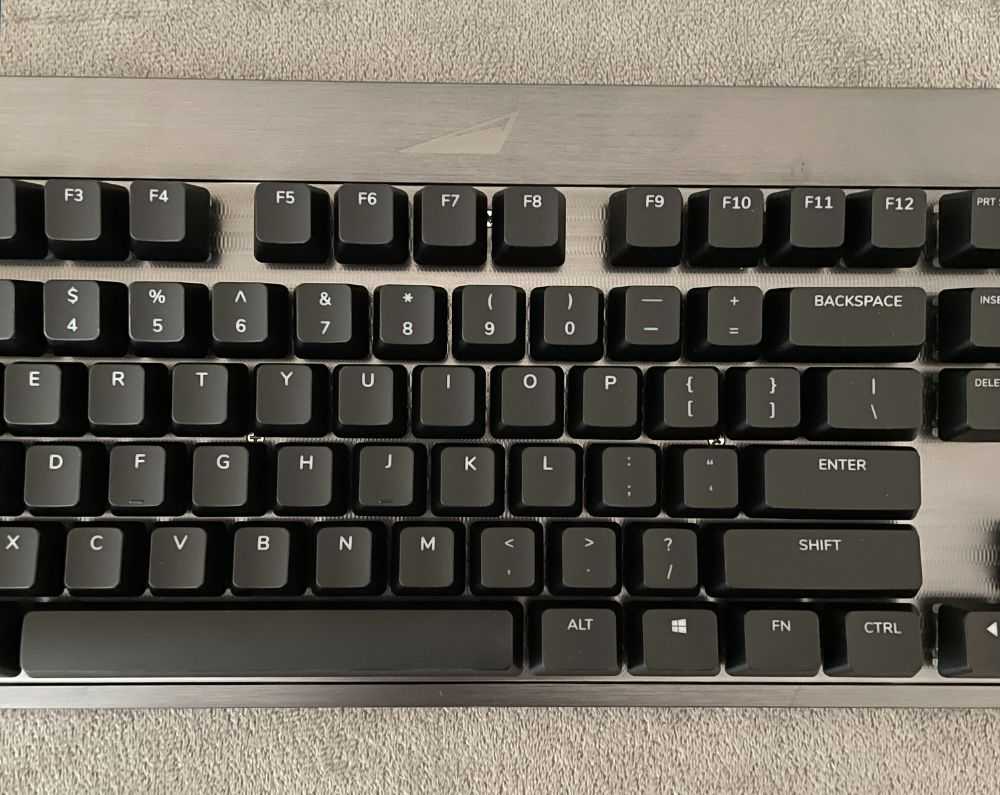
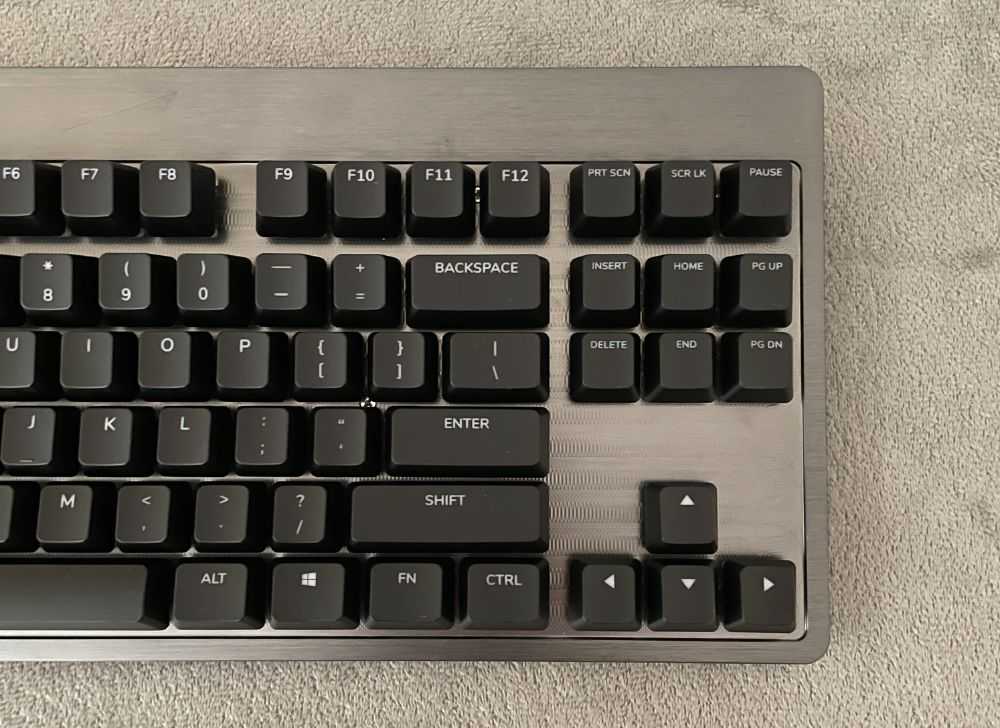
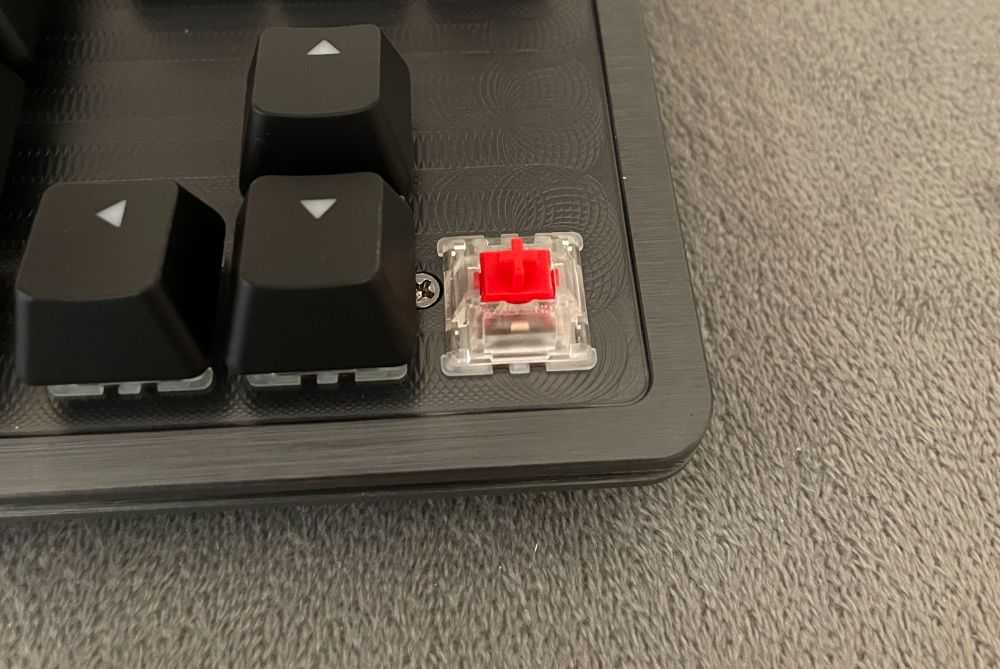
We honestly think this is less convenient than the usual flip-out feet since more set-up time is needed. But luckily, it offers a secure typing surface which we were able to try out during our performance tests. We’ll focus more on this later in the hands-on section of our Mountain Everest Max Keyboard review.
Additionally, it comes with a wrist rest too. It isn’t that luxurious but it doesn’t feel cheap either. It feels nice and offers adequate comfort, but at the same time, it’s also quite stiff. Overall, you won’t feel fatigued when using the wrist rest with the keyboard.
Underneath the keyboard’s body are a couple of cable routing channels and one detachable USB-C cord. The latter provides power to the Everest Max, the USB-A passthrough, and any other extras you connected.
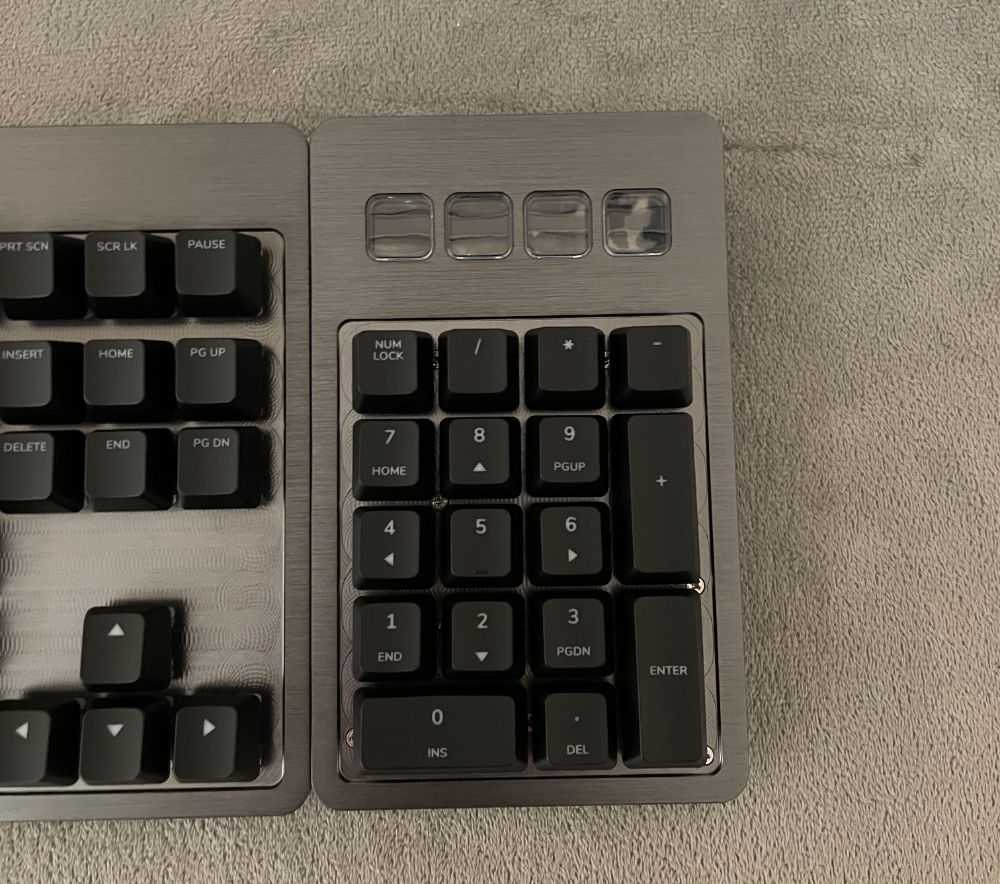
What you’ll notice with the Everest Max is its standalone number pad with additional buttons. This part is quite self-explanatory, but it has something special about it.
The number pad has a switch on the bottom, letting you extend its USB-C connection to the right or left. This gives you the choice to add it to your preferred side of the keyboard. It’s secured in place via magnets which keeps it surprisingly sturdy and secure.
Additionally, you can also prop up the number pad using its own magnetic feet which are like those on the keyboard itself.
You’ll also see a quartet of buttons above the number pad. These become LED screens when you connect it to the keyboard. You can bind these to functions such as media playback controls, opening apps, or running macros.
Additionally, you can even customise each of the buttons with distinct icons from your personal library. You can do this via MOUNTAIN’s desktop software.
We’re also discussing the Everest Max’s keycaps in this Mountain Everest Max Keyboard review. Basically, it has ABS keycaps instead of PBTs. So, it’s best to keep in mind that these will be prone to shine because of your finger oil.
But if you want PBT keycaps, you can purchase some with a variety of colour schemes from MOUNTAIN’s website.
While typing, the keys are nice and stable while the larger keys feature great stabilisers. However, there was a bit of a wobble on the spacebar but it’s nothing alarming.

The Media Dock is another peripheral that comes with the keyboard. It’s plugged to the Everest Max’s top portion, either on the right or left-hand side via USB-C connection.
It’s a nifty addition that lets you scroll through different menus and change the product’s settings on-the-fly. These include decreasing/increasing the volume, RGB lighting controls, and setting its timer.
Here, you can also see your PC’s information like GPU and CPU usage. You can also utilise its five buttons for skipping music tracks, muting the volume, and pausing media. Additionally, you can even upload an image to your display dial using the Base Camp software.
Doing this will make your image appear as a screensaver on the dial, and surprisingly, it’s high-quality.
Mountain Everest Max Keyboard Packaging
We received our keyboard in a very nice and clean-looking cardboard box. The front is all black and it only has “Reach Your Summit” written here. Artwork and designs are limited on the package, but opening it gives you a lot of information about the product.
Also, it even offers excellent shipping protection since it’s thick and durable enough. That means you won’t need to worry about incurring damages while in transit.
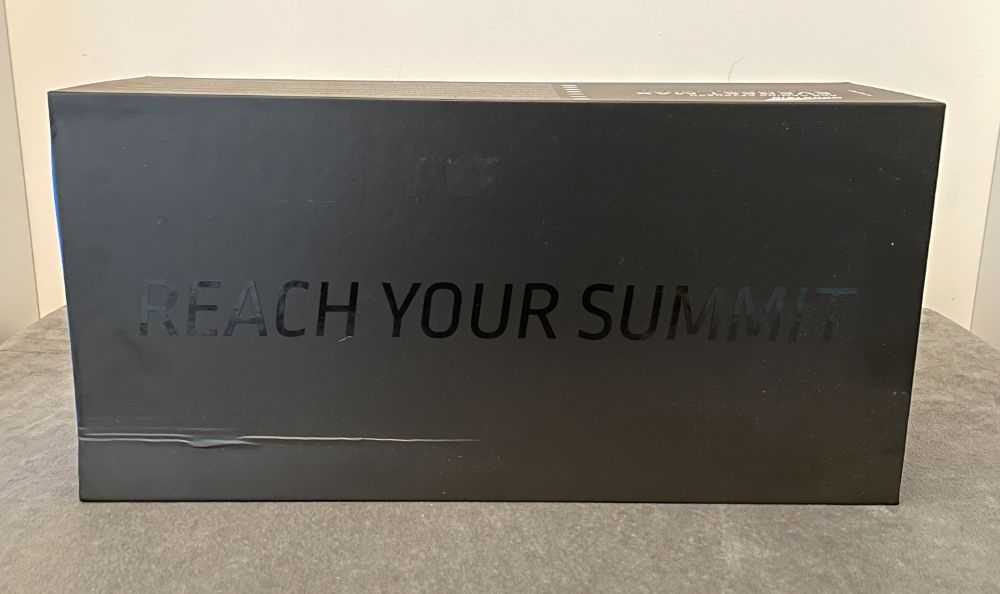
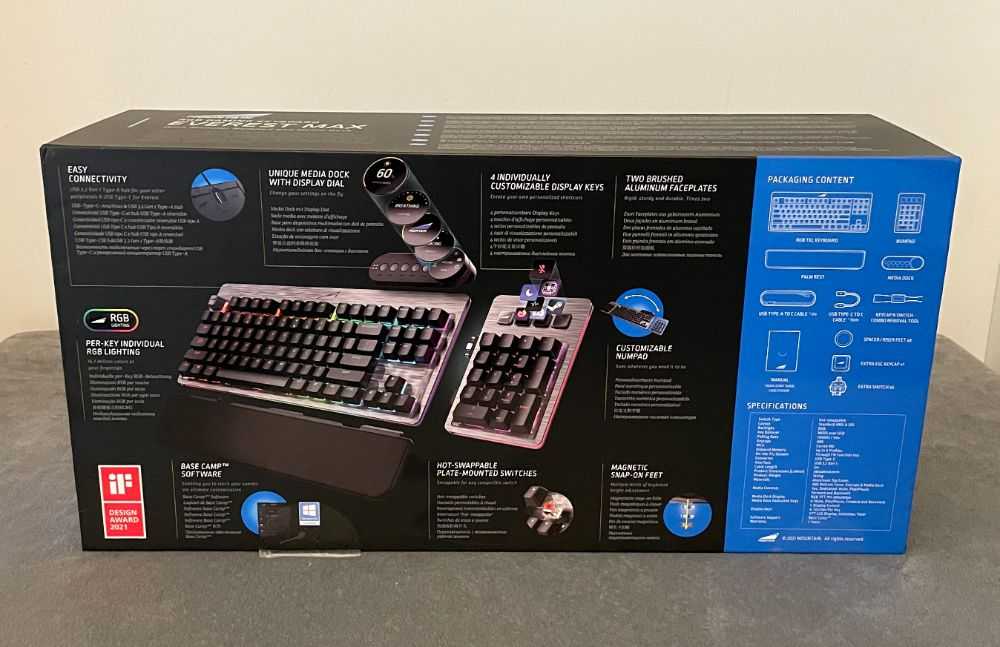
Flipping the box, you’ll find an image of the keyboard along with a couple of information related to it.
Inside, the Everest Max rests in its own space and all other components come in their own boxes. These are neatly and securely packed which is great since we love clean and organised boxes. You can find these extras in a drawer beneath a compartment where the Everest Max sits.
Of course, we’re also identifying each item inside the box here in our Mountain Everest Max Keyboard review. Aside from the keyboard, you’ll find a keycap + switch combo removal tool, a USB-C to C cable, and riser feet. There’s also a USB-A to C cable, five additional Cherry MX switches, and an extra ESC keycap.

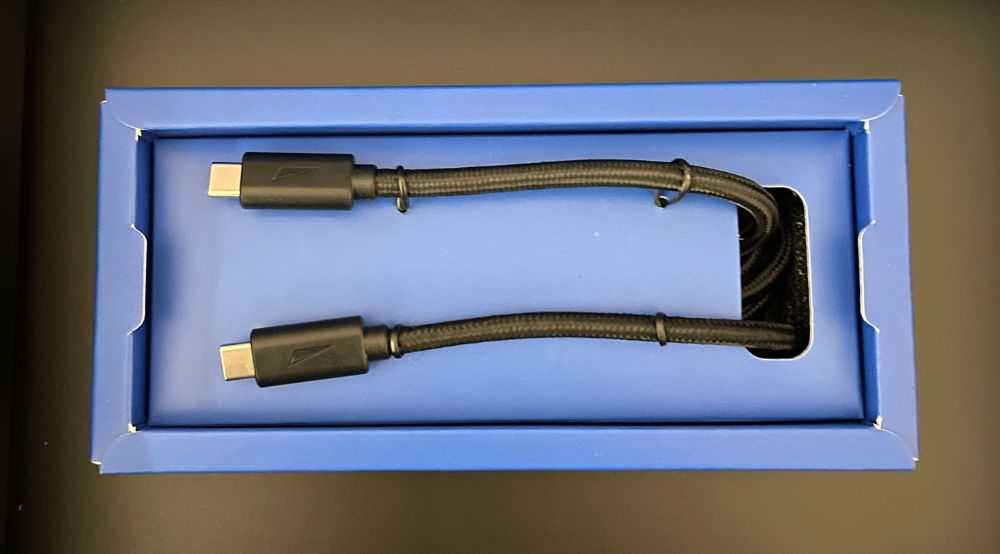
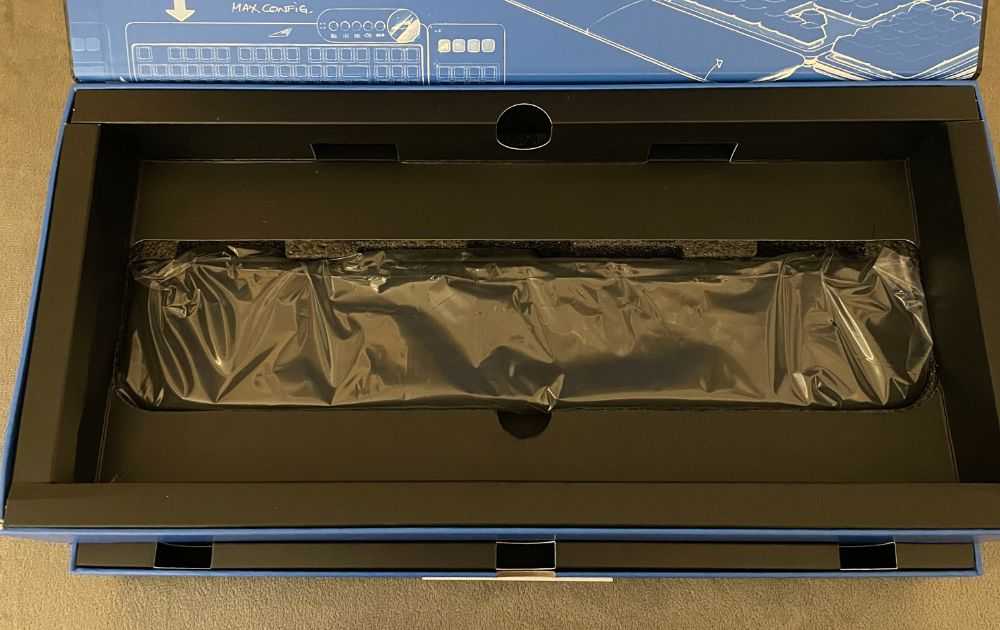
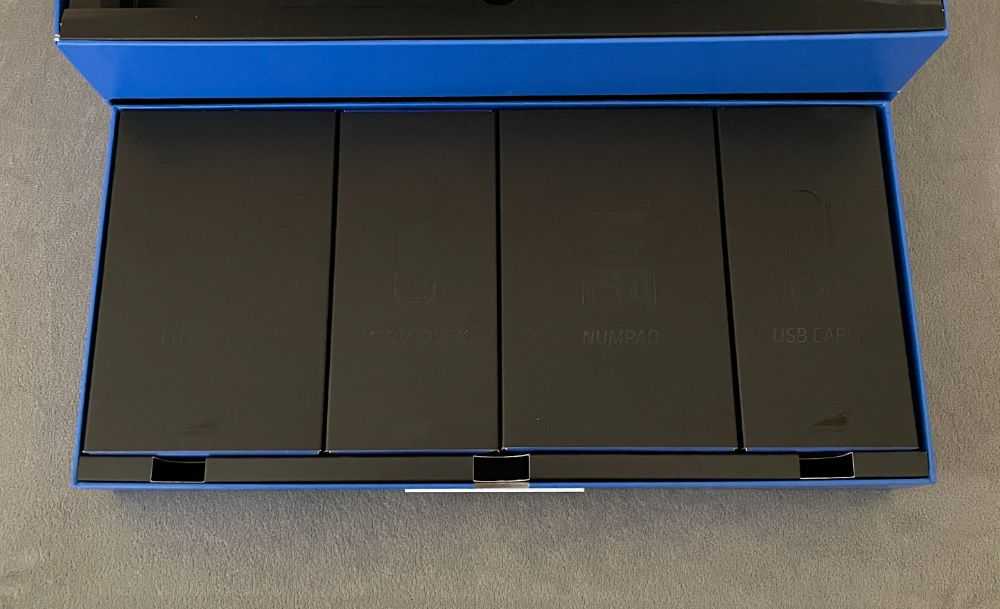
Hands-on with the Mountain Everest Max Keyboard
Of course, our Mountain Everest Max Keyboard review won’t be complete without testing the product and sharing our experience. But before that, we’ll talk about the Base Camp software from MOUNTAIN.
To further customise the Everest Max, we downloaded and installed MOUNTAIN’s Base Camp software. Before starting anything, we checked for updates and after that, we were good to go.
To our surprise, Base Camp was easy to use despite it being a relatively new software. Through the interface, we were able to program macros and customise various keyboard settings. Also, customising the keyboard’s RGB features was a quick and seamless process
What’s great about the software was it didn’t need to run in the background to keep custom profiles. Everything was saved in the Everest Max’s onboard memory and we were able to save up to five profiles.
However, note that the keyboard didn’t have cloud sync so we couldn’t use our saved settings on another computer.
Overall, Base Camp was a comprehensive and user-friendly software. The only downside was it didn’t work on macOS despite the keyboard being compatible with MacBook computers.
Despite that, everything about the software was great since it allowed for full customisation of the Everest Max.
Performance of the Mountain Everest Max Keyboard
We tested the Everest Max for general use and gaming. From there, we had a great typing experience while using this keyboard. Also, the spacing between the keys was just right so we barely had accidental keypresses, and that was great.
With the light actuation pressure, our hands didn’t strain while typing on this keyboard even for long periods. The only downside was the ABS keycaps that made the keys feel a little slippery.
For gaming, its keys didn’t wobble, proving it to be a premium product that isn’t prone to breaking. This is great news for heavy gamers who tend to abuse and press keys roughly during intense gaming sessions.
Each keystroke on the Everest Max was tactile and satisfying. These provided great feedback, but remember that it will vary depending on the switches you use. These are hot-swappable keys, so you can use your preferred key switches anytime.
Another thing we liked about the keyboard was the magnetic discs on its base. This kept the keyboard steady and secure on our desks. That said, we were able to enjoy uninterrupted gaming.
In terms of latency, this was fairly low enough for seamless gaming. Its total latency was 6.5ms which made it feel fast and responsive. It wasn’t the lowest latency that we’ve seen, but the difference was actually too small to notice.
The Everest Max delivered an excellent overall performance which makes it easy to recommend. It works great for both typing and gaming, and we think anyone can take advantage of its amazing features.
Typing Experience on the Mountain Everest 60
(Image credit: Tom’s Hardware)
I’ve already talked about the Everest 60’s 1u right shift key, and how — even though I got somewhat comfortable with it — I never felt 100 percent confident I was pressing the correct key during my testing. The small shift key wasn’t the only thing that took time to get used to: Using the numpad on the left side felt like I was learning to type all over again. (Of course, this wasn’t Mountain’s fault — I was just curious what it’d feel like to use a lefty numpad.) After struggling for a bit, I moved the numpad back to the right side and it felt fine. A left-side numpad is much better suited to gaming as a macro pad.
While the Everest 60’s factory-lubed switches felt hand-lubed and ultra-smooth, I can’t say the same for the stabilizers. The lubricant started to settle after about a day and this made the stabilizer bars rattle a bit more than I’d like. This isn’t a major concern, though — I’ve experienced much worse stabilizer rattle in mechanical keyboards that cost twice as much.
Overall, the typing experience on the Mountain Everest 60 was fantastic, especially for a stock gaming keyboard. The pre-lubed switches were some of the best that I’ve tried, the sound dampening was top-tier, and while there was some stabilizer rattle, it was nowhere near as bad as I’ve seen on other boards.
Gaming Experience on the Mountain Everest 60
Treyarch and Activision finally broke their silence about the future of Call of Duty’s zombie mode, so I decided to jump back into Call of Duty: Black Ops Cold War to destroy some zombies.
I prefer a smaller keyboard for casual gaming, because it takes up less space and I only use W,A,S,D and a few other keys. The Linear 45 switches were nicely in the middle — not too heavy, like the Asus ROG NX Blue switches, or too light, like the Cherry MX Speed Silver switches. These switches are not like most of the switches you’ll find in gaming keyboards. They’re much smoother than stock Cherry MX or Gateron switches; the Linear 45 switches are exciting to see in a pre-built gaming keyboard. The Everest 60 also has a game mode feature, which disables shift + tab, alt + F4, the Windows key, and alt + tab.
Bottom Line
(Image credit: Tom’s Hardware)
The Mountain Everest 60 is a fantastic mechanical keyboard. I wasn’t too keen on the 1u right shift key, but I’m sure I’d be able to get used to it with more use (and if you don’t use the right shift key, this may not be an issue at all). The detachable numpad is an interesting and pretty usable concept, and being able to attach it to either side of the keyboard makes it especially versatile as a numpad or a macro pad.
I also have to commend Mountain for the switches, which are by far the smoothest linear switches I’ve seen in a pre-built gaming board. There’s so much good going on with this keyboard that I almost forgot to mention that the Everest 60 has a hot-swap PCB so you can change up the switches if you want. But the Linear 45 switches I tested are so good that it didn’t even occur to me to swap them out.
Pledge €149 or more About US$ 152
EVEREST KEYBOARD CORE & MEDIA DOCK
Get your hands on the Everest Keyboard CORE, with Cherry MX Red, Blue or Brown AND one Media Dock saving 26% on RRP.
For US layout including Tai-Ho PBT Double Shot Keycaps please add €25 to the pledge amount. For additional features please add on €10 for Silent Red or Speed Silver switches.
Choice of switch and keyboard layout (available layouts are US (ANSI) and UK, DE, ND, FR, ES and IT (ISO)) can be made via survey after the campaign ended.
Includes:
- EVEREST KEYBOARD CORE
- MEDIA DOCK
- CHERRY MX RED, BLUE OR BROWN
Estimated delivery
Aug 2020
Ships to
Anywhere in the world
Design
(Image credit: Tom’s Hardware)
Unlike other 60 percent mechanical keyboards I’ve used, the Mountain Everest 60 features arrow keys and the option to connect a numpad. Adding arrow keys to the Everest 60 is a bold move by Mountain — it’s not easy to pull off without sacrificing usability. I love smaller keyboards, but the main reason I stepped up to a 65 percent keyboard from a 60 percent layout was because I wanted arrow keys.
Mountain’s choice to add arrow keys to the Everest 60 is a bold choice, but it’s not necessarily all good. To fit arrow keys on the board, Mountain reduced the right shift, function, and control keys to 1u (one unit, or the standard size of a letter key). I was mostly able to get used to the 1u right shift after a few days of using the Everest 60, but I still ended up looking down at the board from time to time to make sure I wasn’t pressing the forward-slash key. I understand that Mountain wanted to differentiate itself from other 60 percent boards with arrow keys such as the Freebird60 — but I prefer the Freebird60’s layout, which has a 1.75u right shift key.
My review unit came with Mountain’s factory-lubed Linear 45 switches. I didn’t expect much from factory-lubed switches, but these were so smooth I would believe it if you told me they were hand-lubed. I was very impressed with these switches, and they’re a great choice for those looking for affordable, pre-lubed linear switches. The Linear 45s are also a great alternative to those looking for something smoother than Cherry MX Reds, because they have the same 45g spring weight.
Some companies just slap a layer of foam in the case and call it a day when it comes to sound-damping, but not Mountain. The Everest features a silicone layer at the bottom of the case and two layers of foam, one underneath and one above the PCB. This sound-dampening might seem over the top, but it is effective: I heard no pinging, even when I listened closely for it. But those expecting the solid, premium feel of a metal housing should know that the Everest 60 is almost entirely made of plastic, except for the edges of the board which are brushed aluminum.
This wouldn’t be a proper gaming keyboard without per-key RGB, which the Everest 60 has. The keyboard’s RGB impressed me — especially on the edges — but the keycaps weren’t the best for shine-through. When I set the LEDs to white, the keycaps made the lighting look closer to light pink. The per-key RGB also wasn’t super easy to access because of software issues, which I’ll discuss a little later.
The Everest 60’s keycaps are double-shot PBT, which are more durable than dye-sub keycaps. I enjoyed the feel of these PBT caps. They aren’t coarse like some of the PBT caps I’ve seen on other gaming keyboards. The keycaps are good quality in terms of durability, but the alphas and modifiers look a little blurry, especially on the caps lock key specifically.
The Everest 60’s most unique selling point is the optional numpad, which can be attached to either the left or right side of the board — a feature that’s quite rare and mostly has only existed on much larger keyboards, like Asus’ Claymore and Microsoft’s Sidewinder line from more than a decade ago. The numpad costs an additional $50 and cannot be used alone; it needs to be attached to the Everest 60 to work.
Attaching the numpad is easy: Slide a tab underneath the pad in the appropriate direction that aligns with the Everest, and click it in like you would any Type-C connector. When the numpad is attached, it just kind of sags there unless it’s on a desk. This might sound like nit-picking — especially because keyboards spend most of their time sitting on desks — but it seems like it could be precarious when you move the keyboard. I wouldn’t be surprised if the numpad just fell off one day as you lifted it off your desk, damaging the connection. You’ll need to remember to disconnect the numpad when you want to move the board around.
You might be wondering why someone would want a numpad if they’re buying a 60 percent keyboard in the first place. I like smaller keyboards, but I do occasionally need to input data — a numpad helped a lot when I was adding data to Microsoft Excel for keyboard and case reviews, for example. If data entry isn’t your thing, you could also use the numpad as a macro pad, which is why you might want to attach it to the left side of the keyboard.
The optional numpad isn’t the only neat feature on the Everest 60. This keyboard also has three USB Type-C ports on the front (more than most motherboards), magnetic pucks for raising the board up, a braided cable, and it comes with a switch/keycap puller and an extra keycap with the Mountain logo on it.
Software
The Mountain Everest 60 is powered by the company’s Mountain Base Camp software, which allows you to adjust the RGB on a per-key basis, record macros, and remap keys. Mountain Base Camp does its job pretty well, however there were multiple instances in my testing in which it froze. Booting into Base Camp wasn’t the issue; I usually ran into the spinning wheel of death when I opened the macro recording or lighting customization tab. Freezing aside, Base Camp is simple and easy to use, and doesn’t overwhelm you with an absurd number of unnecessary features.
(Image credit: Tom’s Hardware)
When the software isn’t frozen, the RGB customization is highly-detailed: Even the LEDs around the edge of theboard are adjustable.
Specifications
We further inspected the product for this Mountain Everest Max Keyboard review so we’re discussing its specifications.
The keyboard comes in two colours: Gunmetal Grey and Midnight Black, and both look awesome. It makes use of 3-pin Cherry MX switches that are hot-swappable. Plus, it also sports a Cherry stabiliser which is lubricated and plate-mounted.
The Everest Max has a standard ANSI/ISO layout with RGB backlights and NKRO over USB key rollovers. It has a 1,000Hz/1ms polling rate, ABS keycaps, plus up to five profiles for its onboard memory.
See also
Everest Max has an FN key and you can click this to access its on-the-fly system. The keyboard comes with a USB connector and a USB 3.2 Gen1 interface. Additionally, the keyboard sports a magnetic palm rest that’s also covered in PU leather.
The product measures 265 x 431 x 43mm (LxWxH) and it weighs 1,373g. Then for its cable length, it measures 2m. Lastly, MOUNTAIN included a 2-year warranty along with the keyboard.
Mountain Everest Max review: This keyboard does it all
Note: This review was first published on 8 December 2021.
A veritable control station
Mountain is a relative newcomer into the gaming peripherals space but hasn’t been content to simply sit back and follow the beaten path. With the Everest Max keyboard, the company has displayed an impressive ability to innovate and push the boundaries in terms of design and functionality, creating a keyboard that still manages to delight in a saturated market.
The Everest Max is their flagship keyboard, offering a level of modularity and customisation that I’ve yet to see on a gaming keyboard. For starters, it offers a total of three modular parts that can be attached and detached on-the-fly – a media dock with a display dial, a numpad with customisable display keys, and a plush wrist rest.
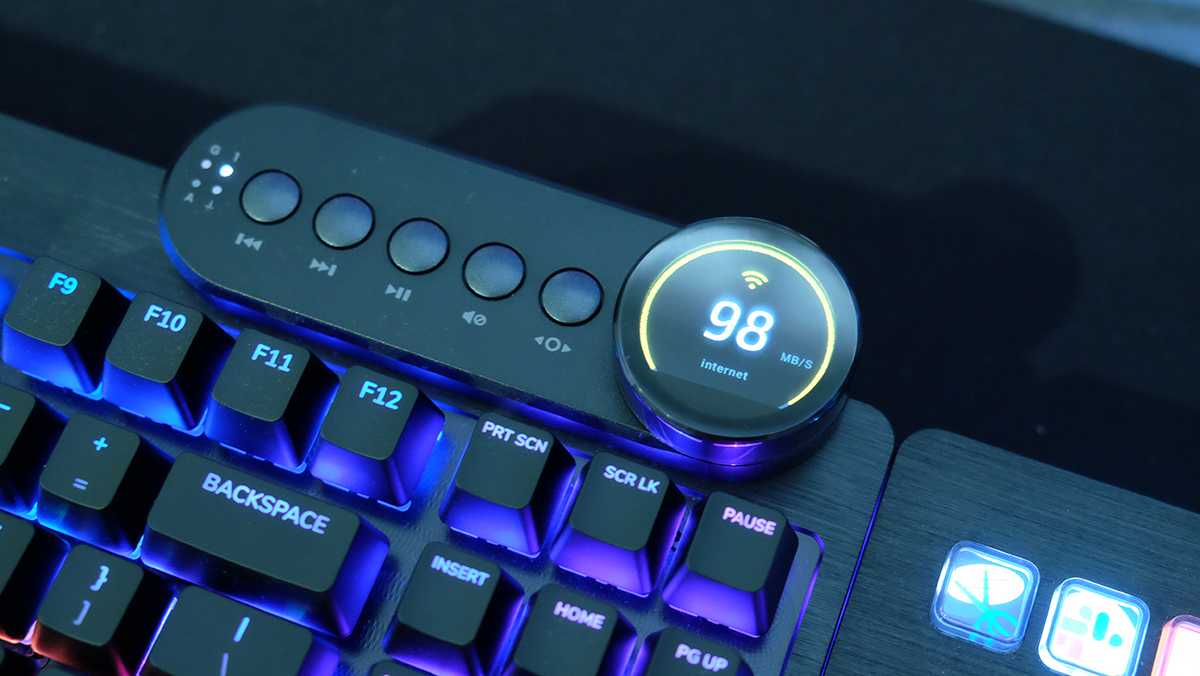
You can even choose where you want the media dock and numpad to go, with support for both on the left and right side of the keyboard courtesy of USB-C ports on both sides. They are also incredibly easy to attach and detach, and once in place, they feel very secure. You don’t need to fumble or peer over the side to look for the USB-C port.
The media dock slides into place effortlessly, and the numpad has helpful magnetic notches to guide it in place. There’s barely any wobble or give once they’re attached, and every bit of this build oozes premium. The cushy wrist rest is topped by PU leather and snaps on magnetically as well, so you don’t have to worry about it not being aligned either.
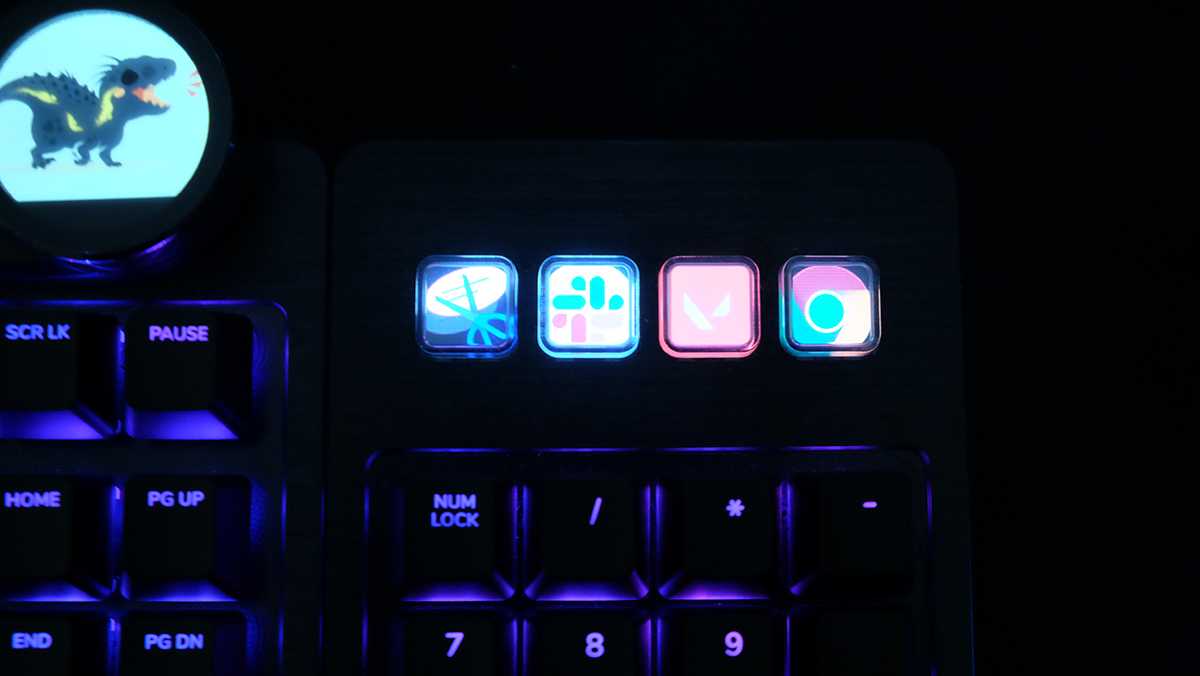
But that’s not even where the magnetic fun ends. The keyboard feet can comprise up to three stackable magnets, which is a pretty neat way to adjust the typing angle. The magnets are plenty strong too, and there’s no danger of them falling off, even when you’re readjusting the keyboard on your desk.
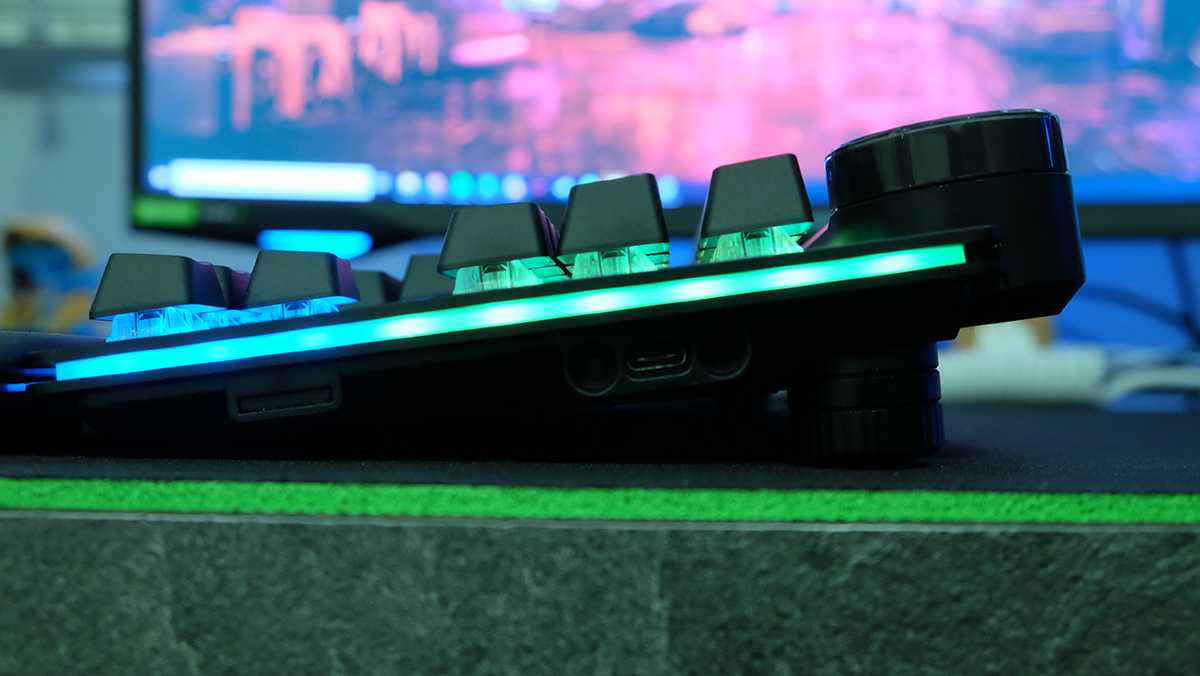
The brushed aluminium top plate adds nice structural rigidity as well, and there is hardly any discernible flex to the board.
The customisable TFT IPS display dial on the media dock is really neat. You can turn it to cycle between things like a clock, which you can also tweak to your liking, brightness, volume, lighting effects, system information, and even your APM. It’s a ton of functionality crammed into a single dial, and there’s a nice, tactile feel to every turn. You can even upload a custom .jpg image to display, if you wish.
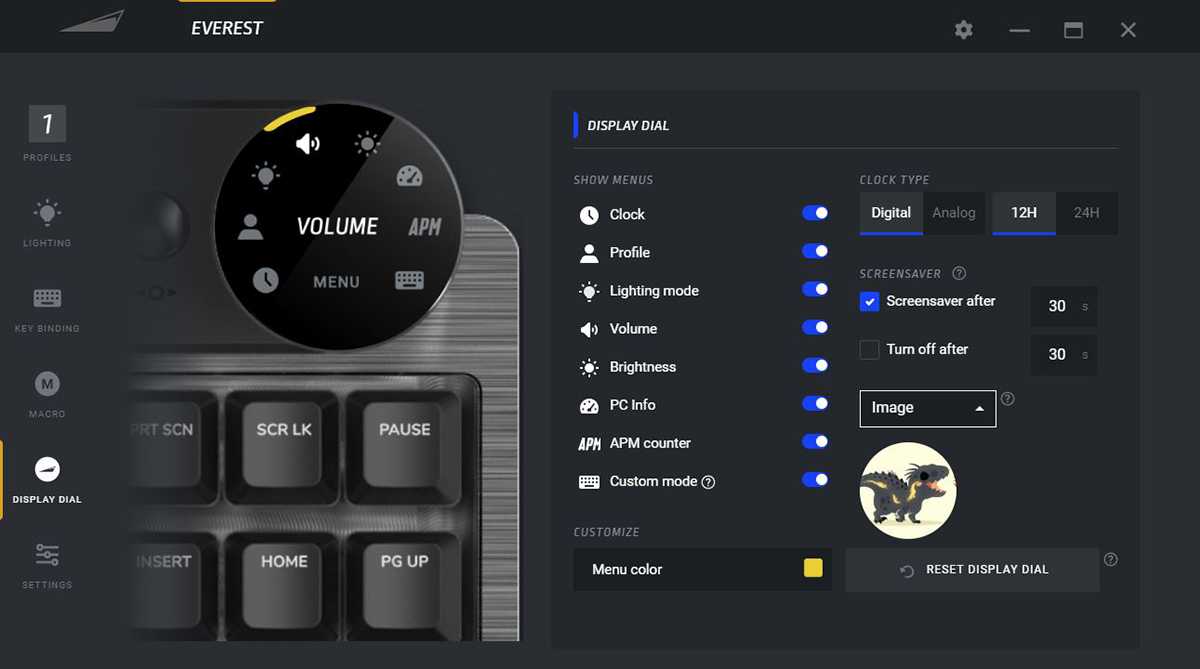
The numpad features five customisable display keys, kind of like what you would get on a stream deck or the old Razer DeathStalker Ultimate keyboard. You can program each key to do nearly anything, from launching a specific web page on your browser to your favourite game or application. The key will then display the corresponding icon, so it’s immediately clear what each one does. There’s even direct integration with OBS Studio to enable recording, streaming, transitions and more with the push of a button.
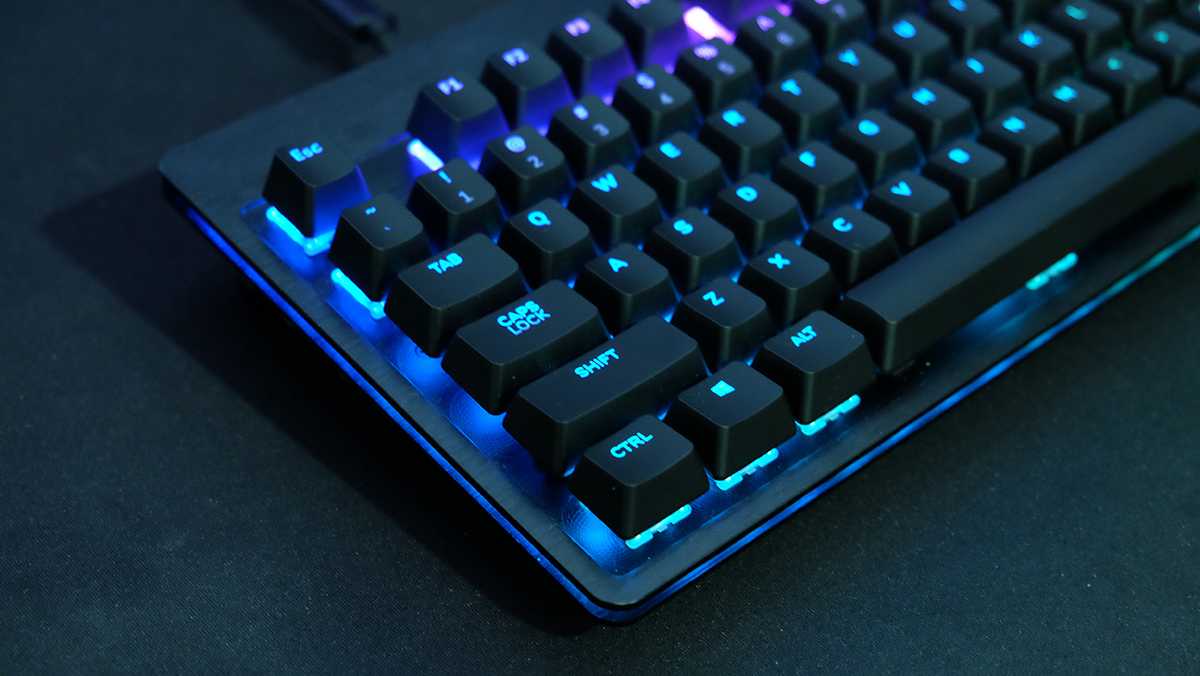
The USB-C port is tucked into its own nook at the bottom of the keyboard, but before you complain that this means you can’t use your own custom coiled cables, Mountain has thought of that too. There is a convenient adapter that fits neatly into the cable routing channels, which then allows you to plug in your own USB-C cable. Alternatively, there are also multiple routing channels on the bottom so you can route the stock cable however you want.
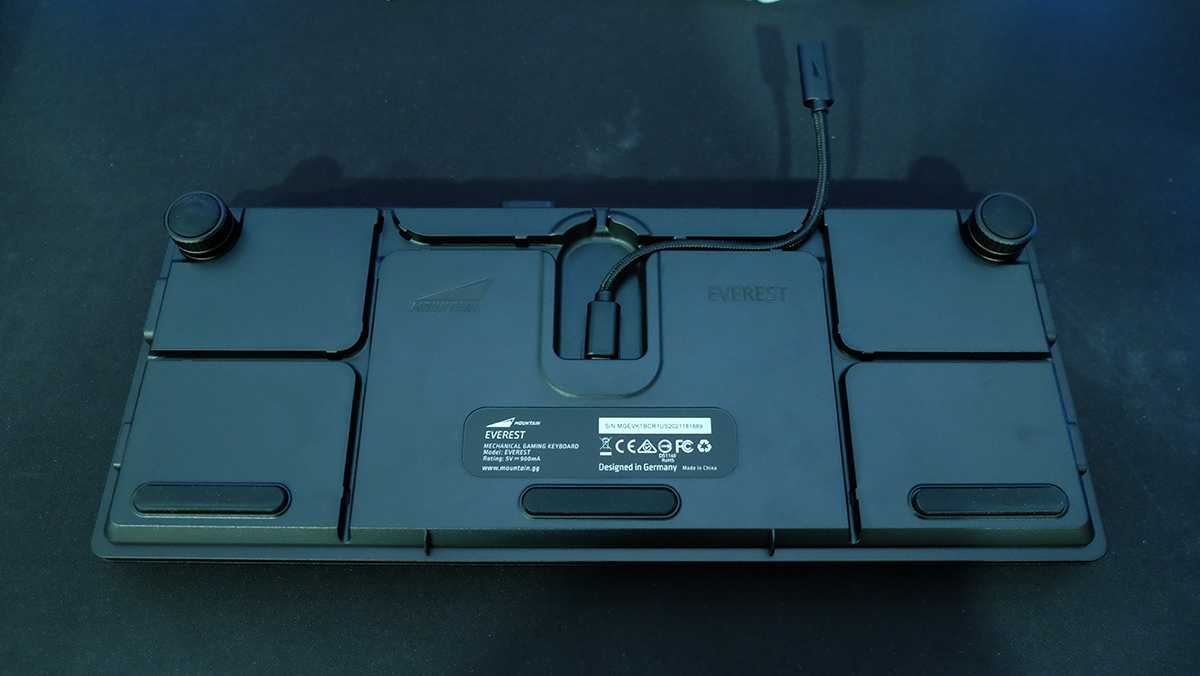
My review unit came with Cherry MX Brown switches, which offer a gentle tactile bump. If you prefer a different switch type, the PCB is hot-swappable, so you can easily remove the switches and put in the ones you want. However, the PCB only supports 3-pin switches, so you’ll have to clip the extra feet off yours if you happen to have 5-pin ones. The Cherry stabilisers have been lubed with Krytox GPL 205g0 lube, which is a thoughtful addition on the part of Mountain to help reduce rattling and noise.
The RGB lighting is bright and even, complete with light rails on the sides for an added dash of panache. You can customise the effects on individual keys in the Base Camp software, down to things like the speed and direction.
Conclusion
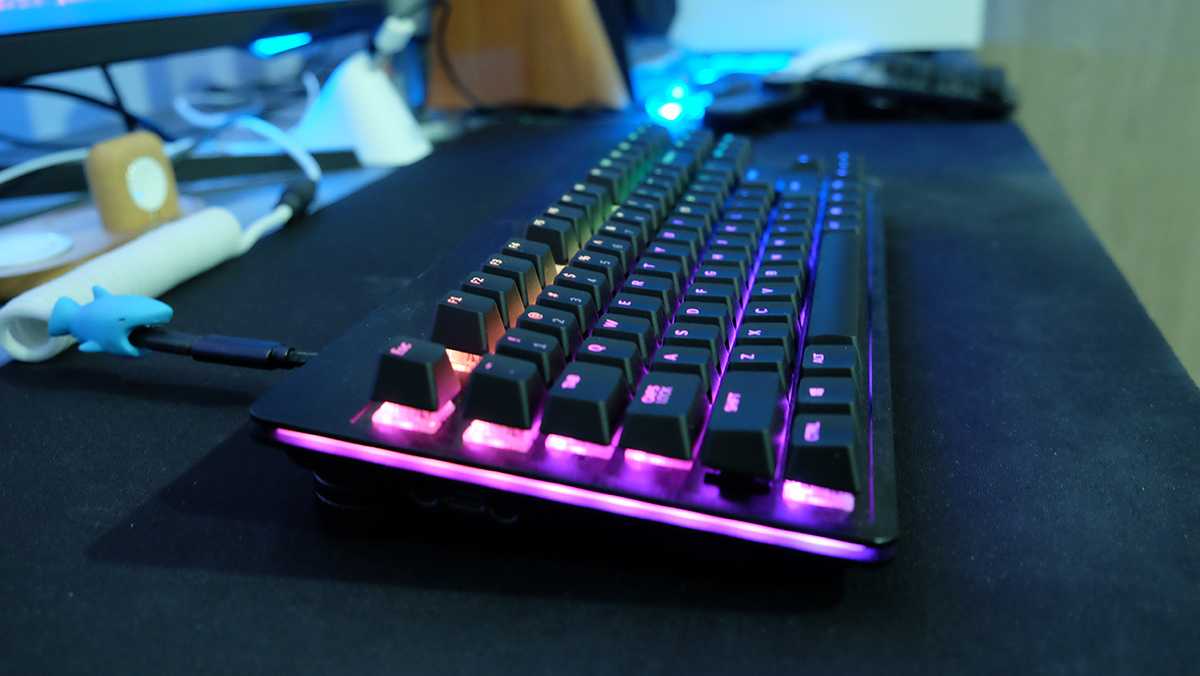
At S$399, the Mountain Everest Max is incredibly expensive, almost approaching the price of certain custom mechanical keyboards. However, this is not your average keyboard. When you think of how much it can do and the creative modularity and customisation available, it starts to make a bit more sense.
The Everest Max’s asking price means that it won’t be for everyone, but if you want the freedom of a TKL at times, while still enjoying the functionality of a numpad, this was made for you. Together with the display dial and keys, and detachable media dock, the Everest Max is a unique keyboard that is unlike anything else on the market today. It’s made for those who want a keyboard that effectively doubles as a do-it-all control station, and is willing to pay to get it.
It is available to buy now on Shopee and Lazada.
Key Features of the Mountain Everest Max Keyboard
What makes this keyboard better than the rest? Continue reading our Mountain Everest Max Keyboard review to know more about it.
Media Dock with Display Dial
The top of the Everest Max features a wide range of controls and displayed information. It’s also the first mouse to have a display that can show your system’s status or switch profiles.
Unique Number Pad Design
With the Everest Max, you can remove the Numpad when not in use. And since it’s detachable, you can set it on either side of the keyboard as well. You won’t have to worry about the quality since it’s built to fit securely to the keyboard.
Custom Display Keys
The numpad of the Everest Max features four display keys that you can modify for more efficiency. Set macros, hotkeys, or your favourite shortcuts, then select an image for display to personalise them further.
Get the Right Height
The unique patent-pending riser feet of the Everest Max provide a sturdy and secure stand. These are better than flimsy plastic feet that aren’t durable.
Aside from the riser feet, the Everest Max also has a set of spacers. With that. you can achieve the perfect height and type comfortably.
Widest Array of RGB Features
Make your keyboard look more stunning with all the RGB features that MOUNTAIN included. With 16.7 million colours and RGB modes available, you can individually customise each key. Also, there’s a slick RGB strip around the keyboard’s body which you can also personalise.
For synchronisation, the Everest Max also supports Razer Chroma RGB.
Extra Smooth
Everest Max uses Cherry stabilisers with tight tolerance and is factory-tuned with Krytox GPL 205 Grade 0. It’s free from rattle and noise, ensuring that this keyboard is a high-quality product.
Replaceable Keyswitches
MOUNTAIN selected gold-standard mechanical switches for the Everest Max. But if you prefer using something different, you can freely change these since the keyboard has a modular design. It’s compatible with any hot-swap variant and you won’t need soldering for replacing the keyswitches.
